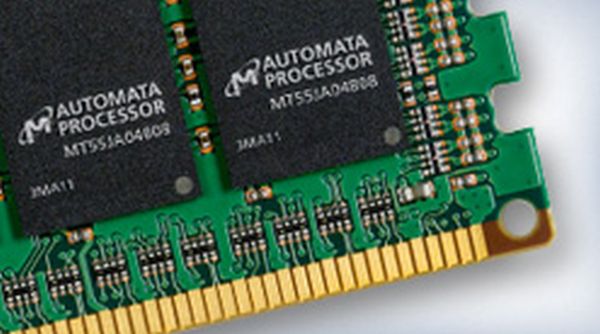Many of today’s most challenging computer science problems involve very large data structures, unstructured data, random access, or real-time data analysis.
These computationally intensive problems are not well aligned with traditional CPU and memory system architectures; they require a fundamentally new approach to computing. Micron’s Automata Processor is a massively parallel computer architecture that provides dramatic processing efficiencies.
How Automata Processing Creates Order From Chaos
Micron’s Automata Processor (AP) is a programmable silicon device, capable of performing high-speed, comprehensive search and analysis of complex, unstructured data streams. The AP is not a memory device, but it is memory based. It leverages the intrinsic parallelism of DRAM to answer questions about data as it is streamed across the chip.
Unlike a conventional CPU, the AP is a scalable, two-dimensional fabric comprised of thousands to millions of interconnected processing elements, each programmed to perform a targeted task or operation. Whereas conventional parallelism consists of a single instruction applied to many chunks of data, the AP focuses a vast number of instructions at a targeted problem, thereby delivering unprecedented performance.
Ecosystem and Tools
Micron is working with a number of leading researchers and ecosystem partners to build the ecosystem necessary to facilitate AP adoption. Georgia Tech, the University of Missouri, and the University of Virginia are among those using the AP to develop new applications. Graphic design and simulation tools, along with a software development kit (SDK), to enable developers to design, compile, test, and deploy their own applications using the AP will be available in 2014.
For more detail:Micron develops parallel processing architecture for supercomputers

